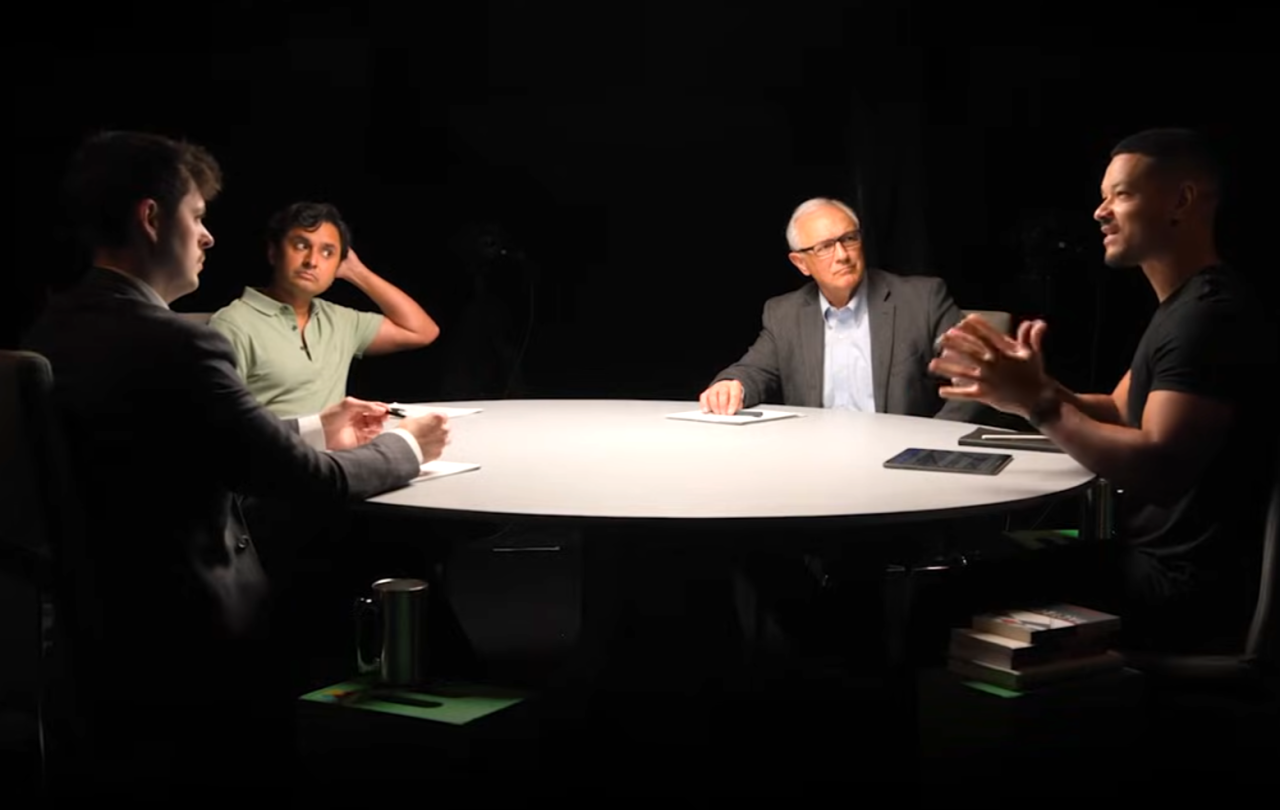
Atheism in the age of authenticity and self-expressive secularism is inherently cannibalistic. I’m not suggesting that Dawkins, Harris and Hitchens are losing their minds and devouring one another. But what I am proposing is that atheism, held within today’s philosophical waters, cannot not affirm the thing it so vehemently denies: faith.
There’s a fascinating moment in a round table conversation with Steven Bartlett (Diary of a CEO) and Alex O’Connor (Cosmic Skeptic). The former presents a case of his friend whose life is radically changed when he becomes a Christian. In some senses it’s a classic despair to hope story. Bartlett concludes by asking O’Connor “what would you say to this friend?” The answer that follows flawed me. O’Conor, an ardent atheist, responds by essentially saying “if these things work, then I’d encourage him to continue doing them.”
In a similar vein, last year Richard Dawkins professed his faith in cultural Christianity. Dawkin’s well documented and fresh alignment with Christianity is accordingly founded upon its ‘fundamental decency.’ Which just to be clear, according to the biologist, is very unlike Islam. Sadly, his newfound respect hasn’t prohibited New Atheism’s inherent Islamaphobia, it just seems to be masquerading in more sympathetic clothing.
Amongst these stories and other examples there seems to be a resurgence, or at least a growing respect, in Christian religion and faith. This can also be seen in church attendance and statistics around those professing faith. And whilst Dawkin’s move away from religious degradation towards cultural affirmation can, in some senses, be welcomed; there is an inherent flaw in both his and O’Connor’s perspectives when held in light of Christianity’s central claims.
For O’Connor, Christianity is seemingly commendable if it leads to self-actualisation, self- fulfilment and a privatised sense of hope. From O’Connor’s atheistic vantage point, the goal of the human is self-actualisation. When confronted by Christianity as a means of this fulfilment, his philosophical stance begins to eat itself. Similarly, for Dawkins, Christianity is a useful tool for the construction and preservation of Western societies. As our country goes through rapid change and our cities exponentially expand in size and multiculturalism Dawkins finds himself affirming the faith he so enthusiastically mocked as a means of security. His atheism inevitably eats itself.
Whilst different, Christianity in both of these cases is used as a crutch. The faith becomes a prop either for societal betterment or self-fulfilment: it is a reductive perspective that views Christianity as the best truth amongst other truths on offer. It approaches religion as a pick-n-mix sweet shop, with Christianity currently the best flavour.
However, for Christians, their faith is not a truth amongst other truths, it is the truth. It is not primarily reasoned, discovered or affirmed upon positive reviews but is fundamentally revealed to us and encouraged by a Triune God of love. Reason, positive societal change and personal fulfilment are not bad things in of themselves but when approaching Jesus, they are utterly secondary. This revelation, when fully recognised, reveals O’Connor and Dawkin’s understandings of Christianity as inherently stunted. For O’Connor his affirmation of faith, when positively leading to self-actualisation, would struggle to reckon with St. Stephen’s death found in the book of Acts. The first Christian martyr pleaded for God’s mercy upon his murderers as they launched stones at him. His faith led to incredible courage in the face of intense violence but I’m not entirely sure you could say it led to a widely accepted notion of self-actualisation. For Dawkin’s his affirmation, of Christianity as a pillar for society, should be held in light of the early church’s teachings on radical hospitality, their startling financial generosity and the faith’s ongoing care for the alien or foreigner. This, I would contend, would unsettle the biologist’s divorce of culture and faith.
The challenge for Christians when confronted by seemingly positive reactions from historically antagonistic voices is to refuse the subtle domestication of the ancient faith. I appreciate O’Connor’s openness to the Christianity and I commend Dawkin’s softening tone. However, their self-defeating and cannibalistic atheism can only affirm Christianity as crutch for their own agendas. They concede defeat but on their own terms. Their vision accepts a partial understanding of following Jesus, an understanding that has been moderated and regulated to fit into their preconceived philosophical and societal agendas. However, for Christians, Jesus is not someone who affirms our predetermined frameworks but instead devastates our self-obsessive tendencies and overwhelms our insecurities with a profound love best revealed in his life, death and resurrection. This realisation is ultimately revealed to us, not on our terms but received freely as a gift. It is given, not grasped or owned, but received
Support Seen & Unseen
Since Spring 2023, our readers have enjoyed over 1,500 articles. All for free.
This is made possible through the generosity of our amazing community of supporters.
If you enjoy Seen & Unseen, would you consider making a gift towards our work?
Do so by joining Behind The Seen. Alongside other benefits, you’ll receive an extra fortnightly email from me sharing my reading and reflections on the ideas that are shaping our times.
Graham Tomlin
Editor-in-Chief






